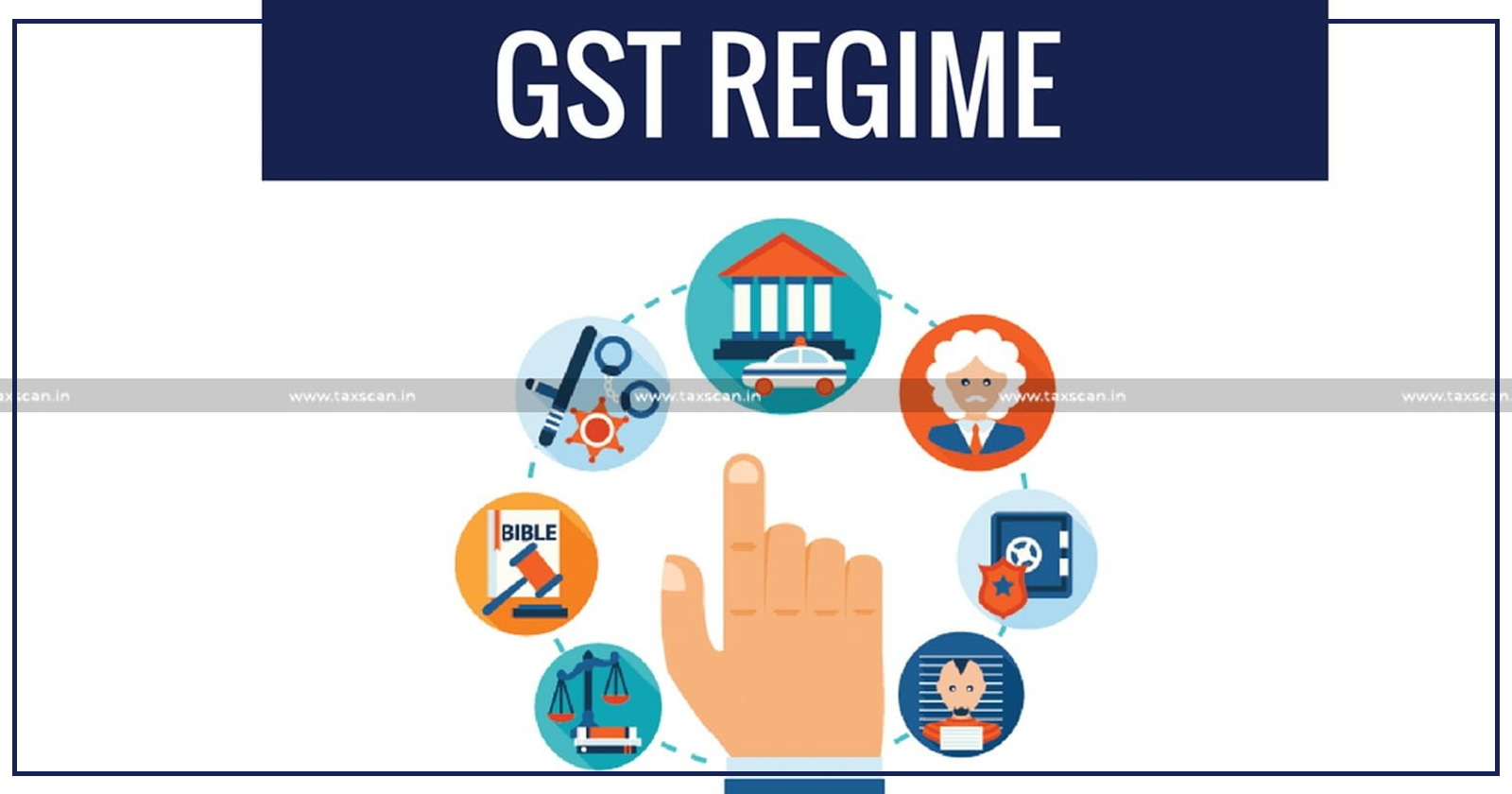Doctrine of In Pari Materia: An Analysis of Cross Empowerment and Bifurcation of Powers in the GST Regime
Doctrine of in pari materia is the answer for the proper bifurcation of powers in the Modern GST Era

GST – gst regime – In Pari Materia – In Pari Materia analysis – Bifurcation of Powers – taxscan
GST – gst regime – In Pari Materia – In Pari Materia analysis – Bifurcation of Powers – taxscan
‘ In pari materia ‘ is a Latin Legal term that means ' on the same subject or matter ' or ' in a similar case. '
This term originated from Roman Law from a very ancient period and is being integrated into the modern legal systems around the world.
The Doctrine 'In pari materia' can be applied where the statutes or legal provisions created are related to similar subjects or if the objective of the creation of the legislation is similar. In such situations, the multiple laws have to be interpreted together to avoid conflicts between these laws.
For instance, if there exists a conflict between the Central Laws and the State Laws then the judges will have to consider both the Laws while deciding the matter, so they could ensure consistency and harmony in the law.
Example: J.K STEELS LTD Vs UNION OF INDIA, is a landmark Supreme Court case that marked the significance of the Doctrine pari materia in interpreting the statutes relating to Tax Laws in India. This helped in ensuring Judicial certainty and predictability in the Judgements.
Conditions for the application of in pari materia act
- Acts which are dealing with similar subject matter or cases
- Acts need to be Interpret
- Acts with identical brief titles
- Acts which have given the collective title
In Pari Materia in Central Goods and Services Tax & State Goods and Services Tax
The Goods and Service Tax Act, 2017 came into effect from 2017, since then some significant indirect taxes which existed before such as VAT, Central Excise Duty, State Excise Duty have been subsumed under GST Act.
Even though various Taxes has been subsumed still there are various components for the GST Act, those are
- Central Goods and Service Tax ( CGST )
- State Goods and Service Tax ( SGST )
- Integrated Goods and Service Tax ( IGST )
CGST
The CGST came into effect according to the Central Goods and Services Tax Act, 2017. The CGST includes all the indirect taxes such as Central Excise Duty, Central Sales Tax that are being levied by the Central Government, all these taxes are being subsumed into a single head, i.e CGST.
These are the taxes which are being collected for the ‘ Intra state transactions ‘ ,i.e the transactions within the state. In such Scenario, the CGST and SGST both are applicable and have to be collected by the Seller. The Tax liability will be equal here so the amount will be equally split in between the Central Government and State Government.
Example : If a person produces a product and sells within the same state, then CGST and SGST will be collected from the end user of the product and that will be equally split. If the tax rate is 18% then the CGST & SGST will be 9% each.
SGST
The SGST is the State Goods and Services Tax. This is the Tax that is being levied by the respective state government upon the Intra-State Transactions of Goods and Services. These rates shall be governed by the respective States SGST Act.
For example Kerala Goods and Service Tax Act 2017 deals with the taxation of intra-state supply of goods and services in Kerala. As mentioned above the amount taxable by the Central Government will be given to the Central Government.
The above mentioned example of CGST is also applicable here.
IGST
Integrated Goods and Services Tax is one among the important components of the GST. IGST was established according to the IGST Act, 2017. The IGST deals with the taxation related to Inter-State transactions, i.e transactions from one or more state to another and the Union Territories.
1. IGST has Uniformity across the country, so the total tax levied remains same across all the country
2. IGST is a destination based Tax so finally the importing state will be benefitted
DECISIONS IN REFERENCE TO IN PARI MATERIA
In RAJKOT NAGARIK SAHAKARI BANK LTD case the Appellate Authority for Advance Ruling, Gujrat ruled about the In Pari Materia status of CGST and Gujarat Goods and Services Tax ( G GST ). So until there are proper dissimilarities in between both acts, until then all the decisions made in reference to CGST Act, 2017 will be in par with the GGST Act, 2017, So if some decision is being made by referring to any one of the statue then it will be like a decision made with reference to both statutes.
J.K Steels Ltd Vs Union of India and Ors, is one among the important cases concerning the Doctrine of In Pari Materia. The Hon’ble Supreme Court held that the provisions of Central Excise Act is in pari materia with the Salt Act. So as a decision is being made out both the statutes must be taken into consideration and should be interpreted as a single code.
In Employees State Insurance Corporation, Madras V. S.M Sriramulu Naidu, it was held that the doctrine cannot be used to tell the acts that are not in parimateria. For instance, in the above mentioned case , the Factories Act and the Employees State Insurance Act are not in pari materia even though both are created for the welfare of the Workers.
In Pari Materia in GST Act
The GST was introduced with a vision of ‘ One Tax One Nation ‘. So proper bifurcation of powers is required to ensure that the Unique Federal System of the nation remains undisturbed. So that the Central Government, State Government and Union Territory could perform proper Tax Collection without interruption. CGST, SGST and UTGST govern these Taxations.
Even though the proper bifurcation was done, even though there comes different scenarios where there will be overlapping of powers and actions, and ultimately that shall be dealt by the court to decide who shall continue with the proceedings.
A Major conflict that could arise is that the Taxpayer is being subjected to the Central and State Authorities under respective Acts. So the Taxpayers could be protected from unwanted Legislation and the parallel proceedings could be avoided. The GST Council had foreseen such a scenario and to avoid such complicationsSection 6 was inserted in both CGST and SGST Act.
The Section 6 of the CGST Act, 2017 explains the Cross Empowerment, which helps in the division of jurisdiction and powers of the central and state tax authorities to ensure that the tax payers are being administered according to a single interface and ensures “Comity of Courts” principle is followed.
The common mans escape from the perils of Double Jeopardy and Res Judicata is made easy with the addition of Section 6 into CGST Act of 2017.
This ensures that the Central Tax officers shall also have jurisdiction over the State Tax and vice versa. It explains about the “ Authorization of officer of State tax or Union territory tax as proper office in certain circumstances “.
This addition of such provisions helps in the empowerment of the State Tax Officers. Also it is to be noted that such similar provisions have been included in the SGST as well for the empowerment of the Central Tax Officers.
Even Though Section 6 has been included the confusions regarding the jurisdiction still persisted. So the issue has been raised in the 21st GST Council Meeting held on 09th September 2017 and the solution for the issue has been approved. Inorder to ensure single interface:
- Out of the total number of taxpayers below 1.5 Cr turnover, 90% of the administrative control of the taxpayers shall be vested upon the State Tax Administrations and rest 10% with the State Tax Administrations.
- Out of the total numbers of taxpayers above Rs. 1.5 Cr turnover , all the administrative control shall be equally divided in between the Central and State Tax administrators in 50-50 ratio.
- The Division of the taxpayers in each state shall be done by stratified random sampling technique.
Judicial Pronouncements regarding the Cross Empowerment
Calcutta High Court in M/s R.P Buildcon Private Limited & Anr v. The Superintendent, CGST & CX pronounced that Parallel Proceedings by the 3 Wings of the same department cannot be conducted for the same tax period. So as the proceedings are carried on by Audit Commissionerate then further proceedings by the Range and Anti - Evasion Office shall be put to an end.
Madras HC in M/s. VGN Projects Estates Private Limited v. Assistant Commissioner, pronounced that upon the Same subject matter no parallel proceedings shall be initiated by the Central or State Tax Authorities.
Allahabad HC in G.K. Trading Company v. Union of India & Ors, pronounced that only mere inquiry initiated by the proper officer on the same subject matter be considered as parallel proceedings as it is only an inquiry.
Gujarat HC in Sureshbhai Gadhecha v. State of Gujarat, pronounced that there cannot be two parallel investigations under the CGST and SGST Act.
After all these decisions made in relation with Cross Empowerment, still the uncertainty remains unsolved.
The proper acknowledgement of the jurisdiction and powers of the Tax Authorities in Central and State is the proper solution to a number of troubles caused to common man. Common plights such as parallel proceedings done on same subject matter can be avoided.
But the misinterpretation of the term ‘proceedings’ and ‘inquiry’ should be look after to avoid tax evaders from escaping the Tax Authorities.
Support our journalism by subscribing to Taxscan premium. Follow us on Telegram for quick updates


